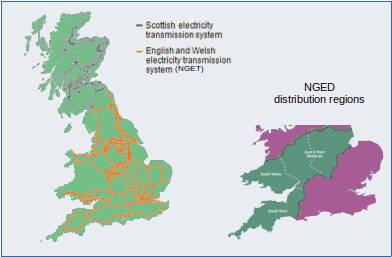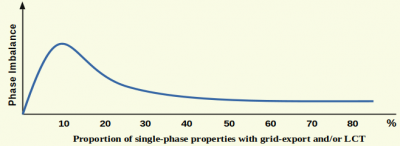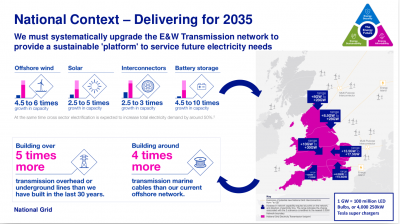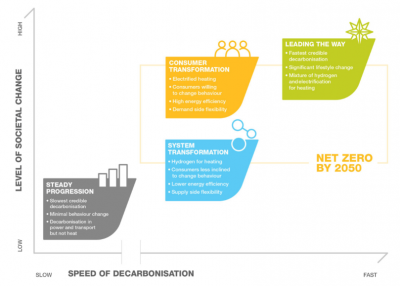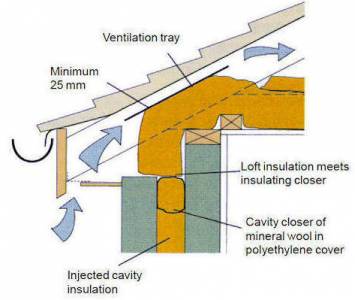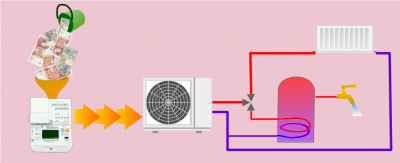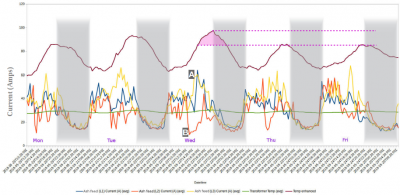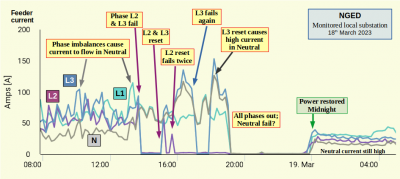National Grid consultation on upgrading etc
Has anyone taken part in the workshops that National Grid have been holding regarding upgrading their network to allow larger systems to feed back more power to the grid. has anyone been restricted on how much they can feed back to the grid who would have wanted to or have the capacity to feed back more.
It seems a shame that there may be a large amount of energy simply going to 'waste' from domestic installations and that most domestic installations were (and still are??) capped at around 3.5kw
I attended the National Grid Electricity Transmission (NGET) workshop at Exeter on 12th Oct.
The other venues were:
- Cardiff; 25th Sep
- Cambridge; 5th Oct
- Manchester; 10th Oct
- Leeds; 17th Oct
- London 31st Oct
NGET were accompanied by EQ, who are experts in hosting discussion groups and recording feedback (rapidly!).
Before I go further, let me differentiate between NGET and NGED.
NGET build and maintain the national transmission grid, which runs at 275kV and 400kV.
NGED hold licences to run the distribution grid (132kV and below) in four regions of England.
Scottish and Southern build & maintain the transmission grid throughout Scotland, and a small section around Hampshire in central/southern England.
The third company in the group are National Grid Electricity Systems Operator (ESO), who actually run the grid 24/7 and plan the supply & demand schedules.
ESO are to be replaced by a new body called the Independent System Operator and Planner (ISOP). Their remit will extend to both electricity and gas, and they are charged with the task of attaining Net Zero by 2050.
All parties were present at the NGET workshops during October so that they could answer questions regarding their areas of responsibility.
The noticeable absentee was Ofgem, who are the energy sector regulator.
Save energy... recycle electrons!
Over on the Hello & Welcome topic I've just posted some details about a typical local substation which you'd expect to find in South East England.
This is a slightly edited recap so that everyone can see why such large grid upgrades are being planned.
The transformer feeds about 250 houses, all on single-phase supplies.
About 10% of the properties have an EV charger and/or a heat-pump...
... and about 14% have solar panels.
Peak demand is at night-time, rather than the early evening.
There's no solar energy being exported when everyone wants to charge their EV on a reduced tariff scheme. 🙄
During those hours, the transformer operates a few percent above its maximum rating.
There will be significant losses due to phase-imbalance at the sub-station.
Phases are assigned pseudo-randomly when an estate is built.
In the majority of cases there is no record of which properties are supplied from the same phase.
Once more houses install EV chargers, the loading of each phase will start to even out.
But 10% is statistically about as bad as it's likely to get.
However, the DNO can't consent to many more EV chargers on such an estate without needing to replace the transformer with another of higher capacity, and then upgrade the 11kV cables which supply it.
The same issue of network infrastructure applies to the high-voltage Transmission Grid (275kV and 400kV).
Most electricity generated from renewable sources is found at the extremities of the national grid, which is the opposite of how it was designed when the country was supplied from a few dozen major power stations in the centre of England.
National Grid Electricity Transmission (NGET) is therefore planning a massive upgrade to increase capacity by a factor of five!
The question is...
... can the UK actually afford such a massive grid upgrade?
National Grid is funded through customer bills, not government taxation.
So to send enough wind-power to SE England from the North Sea and the far reaches of Wales and the West Country, a great many more of the population in those localities will be plunged into energy-poverty.
This is not merely a technical issue, but an ethical one.
Who is going to be paying for the infrastructure upgrades so that the more affluent residents in the South East can charge their EVs and hence use the Greater London ULEZ?
Save energy... recycle electrons!
one issue i see is that why should anyone pay anything so that a business can make more money? why should people pay for something everyone in the future will use? perhaps the energy distribution system should go back into public ownership?
the reality though is that we have always paid for something the future generations will use (not that some younger people accept that), i also think the 'structure' will be far in excess of what is currently required to future proof as best they can.
if green energy is really going to be that cheap to harness and distribute then people will use more of it if its costing them less.
It sounds as if 3-phase supplies should be added when EV/solar/heat pumps are installed. It is unfortunate that such high energy items tend to be single phase (or the 3-phase are a lot more expensive).
Additionally, it does not feel like EV tariffs (and other fixed hour off-peak) are in harmony with how distribution works; does and electricity provider pay a fixed per-unit fee for transmission of the electricity, or does this vary with time and location?
In the end we should probably try to judge based on cost and timelines.
As an aside, I am becoming somewhat more nervous about wind energy’s trajectory. The new CfD auction limit of £73 (2012 prices = £100 2023 prices) is rather high, plus correlated production means yet more needs to be invested in transmission and consumption.
Posted by: @misterbone issue i see is that why should anyone pay anything so that a business can make more money?
There is already a mechanism which oversees that possibility.
The DNOs and NGED operate under RIIO-ED2 and RIIO-ET2 respectively.
Revenue = Incentives + Innovation + Outputs
It's an Agreement between the energy organisation and Ofgem, explained more fully on NGET's own website here and the current contract ends in 2026.
Unless NGET hit the targets in that Agreement then their revenue is constrained, which hurts the shareholders.
We should remember that NGET and DNOs are legally required to ensure that the country has sufficient energy to run!
So they build infrastructure which is capable of carrying the highest demand peaks, plus a margin of contingency to handle fault conditions.
It's now three years since NGESO launched the Future Energy Strategy, which sets out routes for the UK to reach Net Zero by 2050.
The default scenario is that the energy industries will operate to the strategies for System Transformation.
That's the route by which they ensure that the targets are met.
If 'we' were to change the way we live by reducing demand at peak times (ToU tariffs) and storing energy in batteries, then we would flatten the curve for peak-demand.
That would enable NGET to build less infrastructure and hence take a lower proportion of our bills.
So it's within our capability to change their strategy if we wish.
The major problem is that hardly anyone in the UK seems to know enough about the options to have any effect.
That lack of knowledge and understanding is also holding back the innovative energy technologies which should enable this country to be a world leader.
Save energy... recycle electrons!
@transparent As has been mentioned, the costs of all such plans, strategies and improvements / increases in supplies must be paid for by us, the consumers. This makes sense of course but, in the instance of those of us investing in energy storage with control equipment to ensure we use TOU to ensure energy is extracted at the times of least demand or when the grid can best provide that energy are possibly doing this not only to reduce our bills but also to ‘help out’ by smoothing demand as best we can to help with those who are unable or unwilling to do the same. I am a great believer in using the TOU principle to both save money and to help - but - has anyone been able to work out the approximate cost of purchasing storage and control equipment to do this as against the cost of just saying ‘sod it’ and paying the premium rates as and when their domestic demand calls for it? I know my investment is pretty hefty and I see this as a good thing to help the planet and our children / grandchildren etc. Quizzical Regards, Toodles.
Toodles, heats his home with cold draughts and cooks food with magnets.
I'm concerned about the growing number of households in energy poverty who are already forced to pay 'premium rates' because they're on a prepayment meter.
They can try to be as frugal as possible in their energy consumption, but they pay a proportionally greater percentage of standing charge than those of us who can afford to keep our homes warm on a pay-monthly account.
Ofgem is concerned about this too.
They've just opened a public consultation, seeking our views and suggestions.
We need to carefully consider what to write.
A significant proportion of our daily standing charge goes to NGET and our regional DNO.
So if the proposed Great Grid Upgrade were to go ahead under the present rules, then it would disproportionately hit the poorest families in GB.
And please note... National Grid can read what's being posted here.
I know that because I've just told them about this topic's existence! 🙂
Save energy... recycle electrons!
Posted by: @transparent
I'm concerned about the growing number of households in energy poverty who are already forced to pay 'premium rates' because they're on a prepayment meter.
They can try to be as frugal as possible in their energy consumption, but they pay a proportionally greater percentage of standing charge than those of us who can afford to keep our homes warm on a pay-monthly account.
Ofgem is concerned about this too.
They've just opened a public consultation, seeking our views and suggestions.
We need to carefully consider what to write.
A significant proportion of our daily standing charge goes to NGET and our regional DNO.
So if the proposed Great Grid Upgrade were to go ahead under the present rules, then it would disproportionately hit the poorest families in GB.
And please note... National Grid can read what's being posted here.
I know that because I've just told them about this topic's existence! 🙂
‐--‐-----------
I would like to see a means tested social tariff introduced. Some Suppliers have campaigned for this in the past.
I would like to see this over and above any tweaking to standing charges, demand based pricing etc.
It would probably need to be a national scheme with some minimum ofgem rules to work that all suppliers above a certain size had to offer.
I would be happy to pay a bit more on my bills for this.
We already see some social tariff with mobile,broadband,water.
Posted by: @jeffPosted by: @transparentI'm concerned about the growing number of households in energy poverty who are already forced to pay 'premium rates' because they're on a prepayment meter.
They can try to be as frugal as possible in their energy consumption, but they pay a proportionally greater percentage of standing charge than those of us who can afford to keep our homes warm on a pay-monthly account.
Ofgem is concerned about this too.
They've just opened a public consultation, seeking our views and suggestions.We need to carefully consider what to write.
A significant proportion of our daily standing charge goes to NGET and our regional DNO.So if the proposed Great Grid Upgrade were to go ahead under the present rules, then it would disproportionately hit the poorest families in GB.
And please note... National Grid can read what's being posted here.
I know that because I've just told them about this topic's existence! 🙂
‐--‐-----------
I would like to see a means tested social tariff introduced. Some Suppliers have campaigned for this in the past.
I would like to see this over and above any tweaking to standing charges, demand based pricing etc.
It would probably need to be a national scheme with some minimum ofgem rules to work that all suppliers above a certain size had to offer.
I would be happy to pay a bit more on my bills for this.
We already see some social tariff with mobile,broadband,water.
Rather than the 'Great Grid Upgrade', what is being done about the 'Great Energy Efficency Upgrade', since if the energy is not required in the first place, then there would be less need for the former, along with the billions of pounds being spent on building wind and solar farms.
I know it is a big ask, but could we please have a little common sense for once.
Posted by: @derek-mPosted by: @jeffPosted by: @transparentI'm concerned about the growing number of households in energy poverty who are already forced to pay 'premium rates' because they're on a prepayment meter.
They can try to be as frugal as possible in their energy consumption, but they pay a proportionally greater percentage of standing charge than those of us who can afford to keep our homes warm on a pay-monthly account.
Ofgem is concerned about this too.
They've just opened a public consultation, seeking our views and suggestions.We need to carefully consider what to write.
A significant proportion of our daily standing charge goes to NGET and our regional DNO.So if the proposed Great Grid Upgrade were to go ahead under the present rules, then it would disproportionately hit the poorest families in GB.
And please note... National Grid can read what's being posted here.
I know that because I've just told them about this topic's existence! 🙂‐--‐-----------
I would like to see a means tested social tariff introduced. Some Suppliers have campaigned for this in the past.
I would like to see this over and above any tweaking to standing charges, demand based pricing etc.
It would probably need to be a national scheme with some minimum ofgem rules to work that all suppliers above a certain size had to offer.
I would be happy to pay a bit more on my bills for this.
We already see some social tariff with mobile,broadband,water.
Rather than the 'Great Grid Upgrade', what is being done about the 'Great Energy Efficency Upgrade', since if the energy is not required in the first place, then there would be less need for the former, along with the billions of pounds being spent on building wind and solar farms.
I know it is a big ask, but could we please have a little common sense for once.
-----
There is a Great British Insulation scheme @derek-m and the ECO scheme. Lots of money around and I have been helping people apply locally.
You may find opportunities locally with charities etc where you could help out if you have any spare time.
https://www.gov.uk/apply-great-british-insulation-scheme
https://www.moneysavingexpert.com/utilities/free-cavity-loft-insulation/
There are also opportunities to save vat on quite a bit of work
https://www.gov.uk/guidance/vat-on-energy-saving-materials-and-heating-equipment-notice-7086
Posted by: @derek-mwhat is being done about the 'Great Energy Efficiency Upgrade' ?
One of the difficulties with Government-funded schemes to tackle energy efficiency is that the initiatives themselves are inefficient. 😢
A: This forum is stuffed full of discussions about heat-pump installations which don't comply with the Conservation of Fuel and Power section (Part-L) of the Building Regs. Throwing £7500 of subsidy at each MCS-accredited site doesn't solve the problem.
B: Subsidised home insulation is also installed poorly.
But few householders have a thermal-image camera to hand which would reveal the cold-spots where loft insulation isn't pushed into the eaves.
Here's a BRE diagram, showing how it should be done.
In both cases the only indication that something is wrong is that the household energy bills are unaffordably high.
NGET and the DNOs have waited long enough to evaluate the (in-)effectiveness of these retro-fit strategies.
We had subsidised solar-panels on roofs for two decades.
During that time the 'technical losses' (excluding theft) on the Distribution Grid doubled to 10%
When the FIT scheme was flourishing we didn't have any monitoring on local substations.
But when Ofgem funded the OpenLV project on 85 transformers in 2018-19, it didn't take a great deal of scientific knowledge to see the appalling level of phase imbalance.
The graph follows five days, with the longest periods of sunshine on the Wednesday.
Compare that with Thur & Fri which were more overcast.
The upper purple trace on that graph has no scale attached to it, but it shows the oil temperature surrounding the coils of a typical 500kVA transformer.
When solar generation isn't evenly spread across the phases, the energy in the magnetic flux has to go somewhere!
That heat has additional side effects.
It causes thermal degradation of insulation... not just within the transformer and associated feeder fuses,
but also in the underground cables and connections which supply our homes.
Many of those cables are post-war (1950's) and use 'paper' and tar (pitch) within the insulation materials.
When it gets too hot, the tar can get fluid enough to start leaking out, thereby compounding the problem with soil contamination.
With little attention to the underlying causes, the DNOs are increasingly dealing with outages resulting from the 'thermal stress':
How many installers of solar PV arrays and EV chargers are even aware of such issues?
I may not like the strategies being proposed by NGET to massively increase grid capacity...
... but I can at least see how critical the situation has become.
Save energy... recycle electrons!
- 26 Forums
- 2,367 Topics
- 53.7 K Posts
- 170 Online
- 6,042 Members
Join Us!
Worth Watching
Latest Posts
-

RE: Connecting Growatt SPH5000 over wired ethernet rather than wireless
@z8lccda, you’ve just described my setup - Growatt SPH5...
By Majordennisbloodnok , 2 hours ago
-
Data Accuracy Problem: Daikin 8kW Heat Pump's Onecta App vs MMI Power Consumption
Good Evening. Has anyone found the following when usi...
By Nursethescreens , 4 hours ago
-
RE: Help needed with Grant Aerona 3 issues
First time posting so bear with me. Some bits that have...
By Adamp , 8 hours ago
-
RE: Mitsu PUHZ-SW120YHA + EHSC-VM20Uk - Performance
All understood. Obviously its a bit house de...
By JamesPa , 8 hours ago
-
RE: Water Hammer After Heat Pump Install
From OPs description I had the impression (quite possib...
By JamesPa , 10 hours ago
-
RE: Who's your electricity provider and what's your tariff?
@majordennisbloodnok This may be a better thread to ...
By Batpred , 1 day ago
-

RE: Best Heat Pump Brand in the UK
Last Call to Vote & Win! Haven't voted for your Hea...
By Mars , 1 day ago
-

RE: Solis S6-EH1P8K-L-PLUS – Why I Chose It and What I’ve Learned So Far
Interesting question. To be frank, since I have no inte...
By Majordennisbloodnok , 2 days ago
-
RE: Changing from 4-port buffer to volumizer
@andy1618 see the very sage advice from @editor above. ...
By JamesPa , 2 days ago
-
RE: New Fogstar 15.5kWh upright solution
The video shows the JK balancer, but the connection of ...
By Batpred , 2 days ago
-
RE: Ecodan unable to hit legionella target temp - what's the consensus?
@9jwr9 Hi, yes this is the issue with every (stand alon...
By ASHP-BOBBA , 2 days ago
-
RE: Help me keep the faith with my air source heat pump installation
@adamk FWIW I managed unintentionally to 'coax' mine in...
By JamesPa , 2 days ago
-
RE: Octopus Cosy Heat Pump Owners & Discussion Thread
You are in essence right. Adia only works with selecte...
By JamesPa , 2 days ago
-

No, you haven’t missed out, @batpred. This thread’ll st...
By Majordennisbloodnok , 2 days ago
-

RE: Tesla Powerwall – More of a ‘Luxury’ Than an ROI Winner!
Also, though they weren’t prepared to match the price t...
By Toodles , 2 days ago
-
RE: How long will your energy contract last?
My INTELLI-FIX-12M-25-08-29 has less than 12 months to ...
By Batpred , 2 days ago
-

RE: GivEnergy 2025 forthcoming batteries and inverters
Then, perhaps @toodles , you should've made a submissio...
By Transparent , 2 days ago
-
RE: Balancing financial efficiency and comfort using the Octopus Cosy tariff
I am wondering if anyone with an EV could find the 7p/k...
By Batpred , 2 days ago
-
Possibly, but it would also reduce DeltaT across the em...
By JamesPa , 2 days ago

